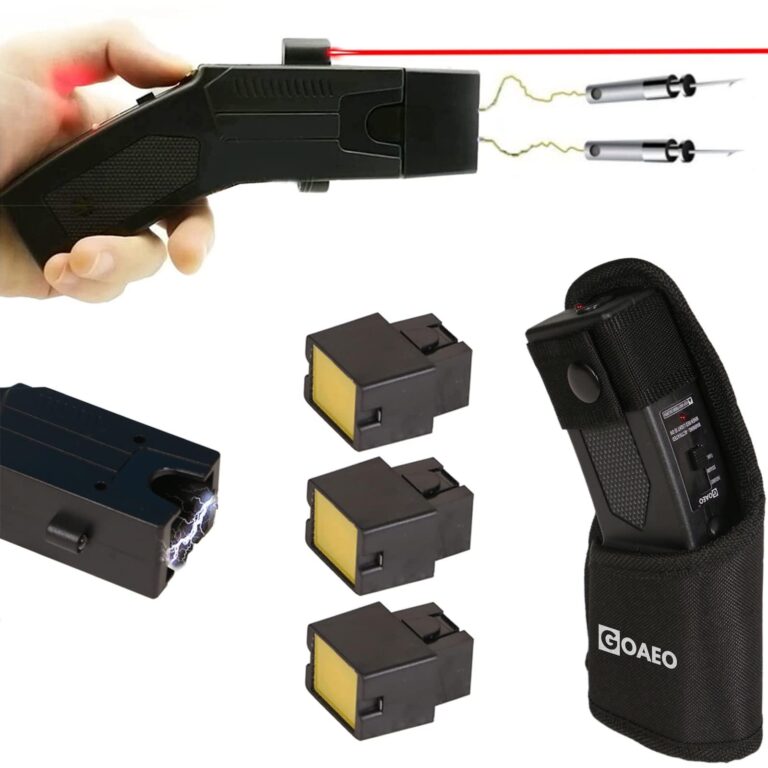Table of Contents
- Understanding the Real Mechanics Behind Stun Gun Technology
- Common Misconceptions Fueled by Hollywood Dramatization
- Limitations in Stun Gun Effectiveness and Practical Usage
- Best Practices for Selecting and Using Stun Guns Safely and Responsibly
- Wrapping Up
Understanding the Real Mechanics Behind Stun Gun Technology
Contrary to popular belief shaped by Hollywood, stun guns do not incapacitate individuals instantly or cause dramatic, movie-style paralysis. The technology operates by delivering a high-voltage, low-amperage electrical charge intended to disrupt voluntary muscle control temporarily. This disruption causes a sensation of intense pain and muscle spasms, which ideally immobilize the target briefly without inflicting lasting injury. However, the effectiveness varies significantly depending on factors such as the device’s power output, contact duration, and the target’s clothing and body composition.
Key mechanics that influence stun gun performance include:
- Voltage and Amperage: Higher voltage allows the electrical current to jump across gaps and penetrate thicker clothing, but it’s the amperage that determines the level of muscle disruption.
- Contact and Placement: To cause more effective muscle incapacitation, the probes or electrodes need to maintain solid contact with the skin or conductive material.
- Physical Condition of the Target: Body mass, muscle density, and individual pain tolerance drastically affect the outcome.
- Device Quality and Maintenance: Cheaper stun guns or those with depleted batteries often deliver inconsistent charges, reducing reliability.
Common Misconceptions Fueled by Hollywood Dramatization
Hollywood has churned out countless electrifying scenes where stun guns deliver instant, knockout shocks to villains, rendering them completely incapacitated within seconds. However, these portrayals often stray far from reality. In truth, stun guns are designed more for temporary distraction and pain compliance rather than immediate unconsciousness. The dramatic depictions of characters dropping like flies ignore factors such as the individual’s pain threshold, body size, and even adrenaline levels during high-stress situations. This oversimplification fuels unrealistic expectations, which can lead to overestimating the effectiveness of stun guns in real-world encounters.
Additionally, films tend to gloss over several critical limitations, presenting stun guns almost as infallible tools. Here are some misconceptions commonly amplified by the silver screen:
- Instant Knockout: Stun guns rarely cause immediate unconsciousness.
- Unlimited Range: They require direct contact or very close proximity to work effectively.
- One-Use Power: Real devices might need time to recharge or have limited energy output.
- Uniform Effectiveness: Effectiveness varies drastically based on clothing and body composition.
Limitations in Stun Gun Effectiveness and Practical Usage
Despite their cinematic reputation, stun guns often fall short of expectations in real-world situations. The effectiveness of these devices heavily depends on a variety of factors, such as the user’s proficiency, the duration of contact, and the target’s clothing. Heavy or thick clothing can significantly reduce the electrical charge delivered, thereby diminishing the device’s incapacitating effects. Additionally, if the probes don’t make a firm connection with the skin, the stun gun’s ability to disrupt muscle control is compromised, leading to inconsistent results that movies rarely portray.
Practical usage also reveals several limitations not shown on the big screen. While stun guns are compact and easy to carry, they require close proximity to the target, often within inches, which can put the user at risk. Moreover, legal restrictions vary dramatically across regions, meaning that in some places carrying or using a stun gun can lead to legal consequences. It’s important to understand that these devices are tools for self-defense, not guaranteed solutions for every hostile encounter, which contrasts sharply with their often exaggerated cinematic portrayals.
Best Practices for Selecting and Using Stun Guns Safely and Responsibly
Choosing the right stun gun requires a careful balance between effectiveness, legality, and personal comfort. Prioritize models that offer adjustable power settings, allowing you to customize the device to your specific needs without compromising safety. Additionally, consider the ergonomics-holding a stun gun securely and comfortably is essential during high-stress situations. Always verify local laws and regulations before purchasing, as stun gun legality varies widely, and owning one unlawfully can lead to serious consequences.
Once equipped, responsible use is paramount to ensure stun guns serve as a deterrent rather than a weapon of harm. Keep the stun gun accessible but out of reach of children or unauthorized users, preferably in a secure holster or locked container. Never deploy the device on non-threatening individuals or in a reckless manner. Maintenance also plays a critical role; regularly check battery life, clean contact points, and test functionality according to the manufacturer’s guidelines. In the real world, a stun gun’s effectiveness depends heavily on sound judgment and proper handling-not the dramatic one-hit incapacitations portrayed on screen.
Wrapping Up
In the end, while stun guns certainly have their place in personal defense, the reality falls short of the high-octane excitement often depicted on the big screen. Hollywood thrives on dramatization, amplifying effects for entertainment value, which can lead to unrealistic expectations about these devices. Understanding the practical limitations-like range, effectiveness, and the need for precise contact-helps users make informed decisions and appreciate stun guns for what they truly are: useful tools, not superhero gadgets. So next time you see a stun gun in action on film, remember to separate fact from fiction and stay safe with a grounded perspective.Check Our Other Blogs
- StunGun – Your Trusted Source for Stun Guns, Laws, and Self-Defense Tips
- PepperSprayLaws – Your Trusted Resource for Pepper Spray Information
- StunGunLaws – Your Trusted Guide to Stun Gun Legality and Safety





